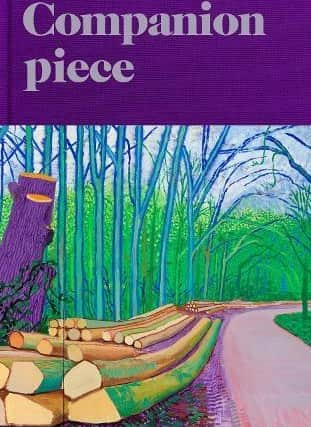Book review: Companion Piece, by Ali Smith


TS Eliot wrote “the whole of Shakespeare’s work is one poem” and of George Herbert that his work was “definitely an oeuvre to be studied entire”. These thoughts came to me reading Ali Smith’s new novel, Companion Piece. It might seem like a pendant to her “Seasons” quartet, although there are significant differences. It does not seem likely that a reader who only read Winter or Summer would fully appreciate the choreography of the work; a necessary structuring since Smith took up a very interesting challenge. The quartet was the novel “in real time”, with only the slightest of lag between contemporary events and their aesthetic rendition. For example, the pandemic was creeping into sight in Spring before it was called a pandemic. Even in terms of design, Companion Piece aligns itself with the quartet. It too is a novel set on the edge of the moment. The narrator Sandy Gray, referred to sarcastically and accurately as “Shifting Sand”, opens the book in lockdown and despair. “I didn’t care what season it was. I didn’t even care what day of the week. Everything was mulch of a mulchness to me right then. I even despised myself that bit of wordplay, though this was uncharacteristic, since all my life I’d loved language, it was my main character, me its eternal loyal sidekick. But right then even words and everything they could do and couldn’t do could f*** off and that was that”. I think we all know something of that torpor and terror of the past two years.
But it is a companion piece to other parts of Smith’s work. Some of the narrative, a tale within a tale, is set in the Early Modern period and features a female blacksmith while the rest is in the present; just as her artfully reversible How To Be Both was divided between Renaissance and present day Italy. It also significantly forced the reader to choose whether they begin in the historical or the modern, and the opening section of Companion Piece is entitled “You choose”. Part of the narrative involves a human cuckoo, the person who arrives and refuses to leave, just the “ethical consultant” Miles Garth does in There But For The. There is an explicit engagement with themes of gender identity and fluidity here, in a manner similar to the delightful Girl Meets Boy. As with The Accidental we have the sense of a fey, disruptive intervention, albeit in a period when anything different would have been welcome. I’m sure given long enough I could find the connective tissue to all of Smith’s novels, but this is a review and not an academic paper.
Advertisement
Hide AdUnlike the quartet there is no overlooked real-life artist here, but Sand (a fictitious character) is an artist, creating painterly palimpsests of poems, layering up words and matching them to colours. Her father is in hospital, not with Covid, but the restrictions mean that visiting is limited. Smith is not didactic but she is most certainly polemical. The radio offers nothing but government ministers reciting “how this country was number one, listing the things it was number one at and telling me how the thousand or so people still dying in this country every week was something we just had to chum along with now”. It also encompasses rage against policeman taking selfies of victims, the treatment of legitimate protestors, raw effluent in rivers and much more. But Sand is galvanised when someone she knew at college – Martina Pelf, née Inglis – contacts her out of the blue with a curious story. While bringing a rare Early Modern lock and key, The Boothby Lock, back to Britain, she had been detained over paperwork problems. (The Boothby Key is a fiction, though Martina says “Google it. You’ll love it”). In solitary holding, she eventually hears a voice with the cryptic message “Curlew or curfew? You decide”. Sand’s acquaintance with Martina was limited to Martina asking to crib an essay on e e cummings, but the story interests her, and she offers a story in return, about a branded young woman unexpectedly in her flat who smashes, levitates and reconstructs a clock, which is directly linked later to the Early Modern blacksmith narrative. Then the Pelf twins turn up, angry that Sand has bewitched their mother and being awfully self-righteous about pronouns – Smith has a great deal of mischief around the true history of “they”, as she does with “hello”. Both the twins are raging anti-vaxxers, despite showing all the symptoms typical of infection. Before long the Pelf twins, and their mother, are turning up regularly. It is testament to Smith’s skill that the eeriness is conjured in less than a sentence – their father had “had one of his visions” and thinks the area “ripe for pelfing”.


It wouldn’t be an Ali Smith novel without linguistic fireworks; increasingly nor would it be one without a sense of moral indignation. Companion Piece is, to use the Smith cliché lexicon, “characteristically unclassifiable”, “predictably unpredictable” and “as freewheeling as a rollercoaster”. She is in grave peril of becoming a national treasure. My only worry was that this style is getting too easy for her. Perhaps the next book will be a surprising surprise.
Companion Piece, by Ali Smith, Hamish Hamilton, £16.99
A message from the Editor
Thank you for reading this article. We're more reliant on your support than ever as the shift in consumer habits brought about by coronavirus impacts our advertisers.
If you haven't already, please consider supporting our trusted, fact-checked journalism by taking out a digital subscription at https://www.scotsman.com/subscriptions